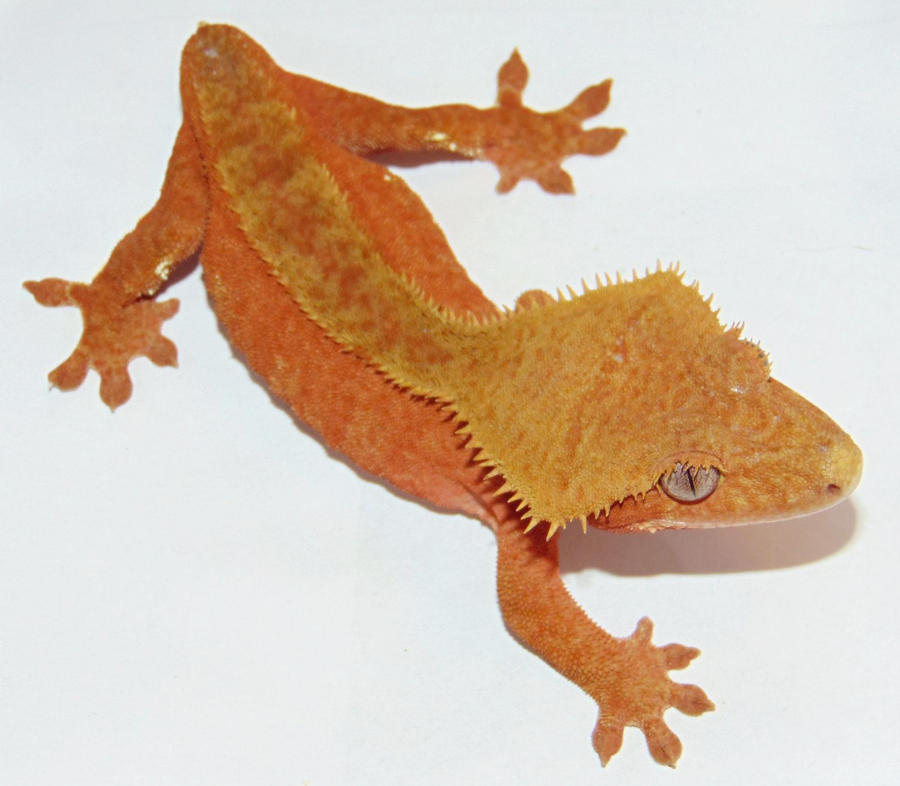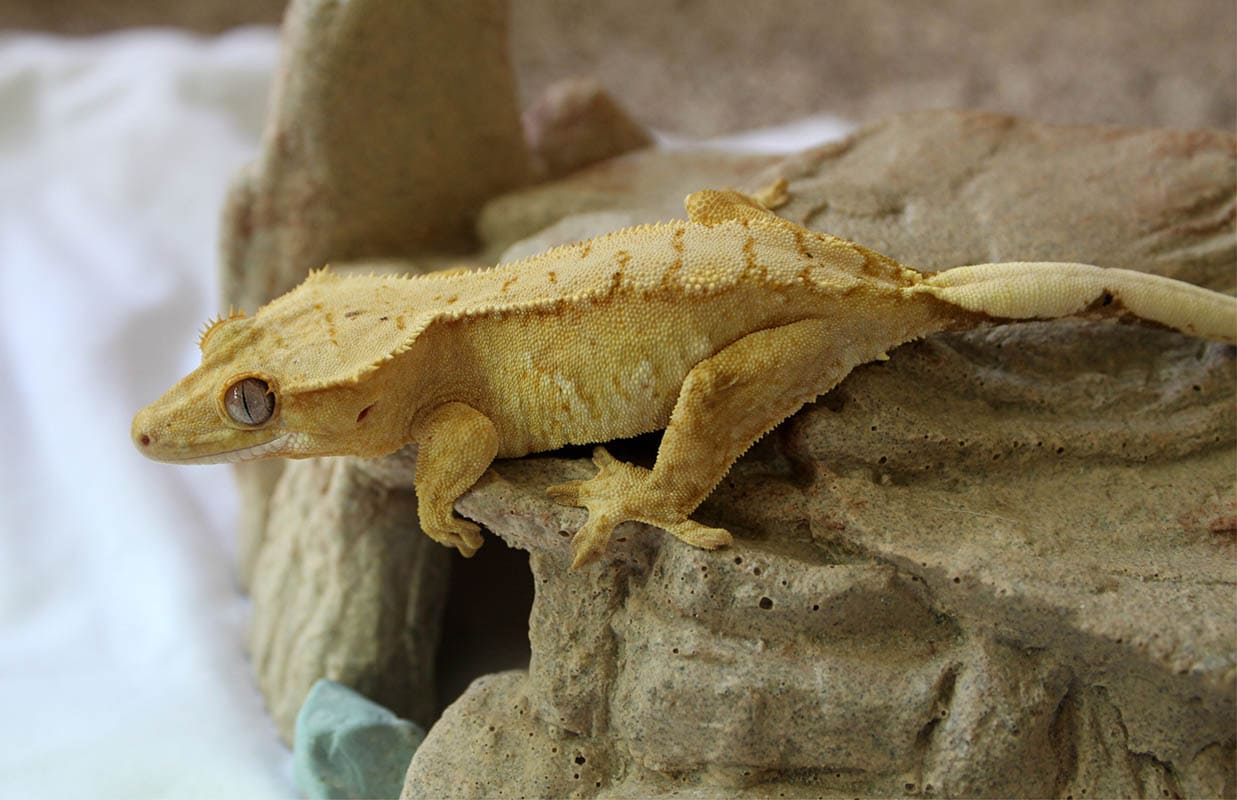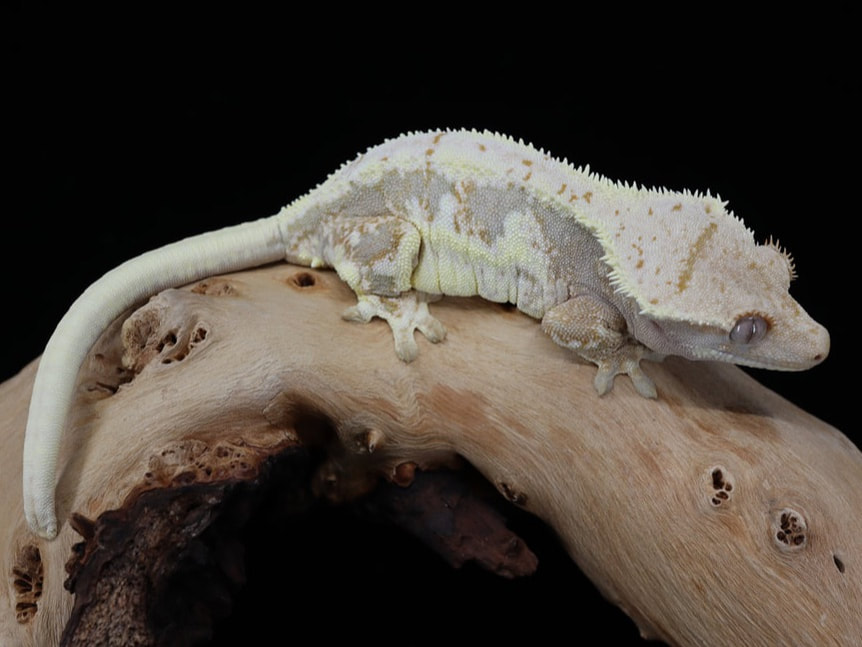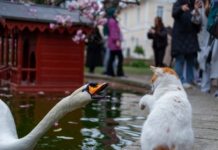Last Updated on February 9, 2024 by Fumipets
Dazzling Diversity: Exploring the Morphs of Crested Geckos and their Vibrant Colors
In the realm of reptile enthusiasts, the Crested Gecko (Correlophus ciliatus) stands out as a captivating and popular choice for pet owners. Known for their distinctive appearance and charming personalities, these geckos come in a fascinating array of morphs, each boasting unique color patterns and markings.
In this exploration, we embark on a journey into the world of crested gecko morphs, unlocking the secrets behind their mesmerizing hues and discovering the incredible spectrum of colors that adorn these remarkable creatures.
Crested Geckos With Colors
Crested Geckos are popular pet reptiles because they come in such a broad range of colors and patterns, known as Morphs. This is derived from the word “polymorphism,” which refers to numerous visually diverse variations of the same type of animal. Because there is no scientific method to establish unique morphs of crested Geckos unique morph — two different-looking parents might produce an animal that looks nothing like either of them — these Morphs can become difficult. This is one of the many reasons why owning and producing these animals is so thrilling.
The genetics of most other pet reptiles, such as Leopard Geckos or Bearded Dragons, are reasonably well known, however, the genetics of Crested Geckos are not extensively documented, making the many variants difficult to precisely identify.
Having said that, there are a few crested gecko morphs and colors on which collectors and breeders agree. We’ll look at some of the most prevalent morphs of these incredible creatures in this post.
1. Patternless

The Patternless Crested Gecko morph has no patterns, spots, or stripes, as the name implies. They may be any color, shape, or size, but there must be no color fluctuation, including highlights. Olive, chocolate, dark black, red, and yellow, as well as all hues in between, are the most prevalent colors.
2. Bi-color

Bi-color Crested Geckos are patternless but have a dual-tone coloration on the top of their heads and backs, which is slightly darker but occasionally lighter. They may also have a mild patterning or a little different shade of their basic color along their dorsal. This patterning is insufficient to classify them as a Dalmatian or Tiger, but not insufficient to classify them as “Patternless.”
3. Tiger/Brindle

Tiger Crested Geckos are among the most popular geckos, because of their distinctive “tiger stripe” patterning. Their dorsal is covered with deeper bands of color that run down the sides of their bodies and may be practically any color combination. Brindles are Tigers that have even more stripes of different intensity than regular Tigers.
4. Flame

Flame Crested Geckos are more frequent than other morphs, yet they are no less gorgeous. They often have a darker base color with a cream back and head. Small stripes of creamy coloration that run up their sides, like a flame pattern, give them their moniker “flame.” Flame Crested Geckos may be practically any color, and in rare occasions, Tiger patterning can be observed on them as well.
5. Harlequin

Harlequin Crested Geckos are Flame Crested Geckos with more visible cream on their backs and flanks, and are heavily patterned or concentrated. Their base hue, which is usually crimson or near-black, is contrasted with Harlequin patterning in cream or yellow. Harlequins exhibit patterning in their limbs, which is a unique characteristic among Flame Geckos.
Read this if you’re interested in learning more about the Halloween Crested Gecko.
6. Extreme Harlequin

Intense Harlequins are highly sought after by collectors because to their extreme patterning of cream or yellow throughout their bodies, generally 60 percent or more. The most coveted variants feature a near-black base coat with cream patterning, which creates a startling and lovely contrast. Some of these Geckos have so intricate patterns that it’s impossible to tell what color their base coat is!
7. Pinstripe

Pinstripe Crested Geckos are one of the most popular pattern types, characterized by a combination of two or more of the qualities listed above. Two pairs of elevated scales, generally cream in color, run along their backs, producing a pinstripe pattern. Flame or Harlequin patterning, tiger stripes, or even a single color might be seen on the remainder of their body.
8. Phantom Pinstripe

Phantom Pinstripes, unlike the conventional Pinstripe Gecko, have a deeper stripe of color running below and around the scales, rather than the elevated coloration of the classic Pinstripe. They feature a lighter base color with darker pinstriping and don’t have as much contrast as other variants.
9. Quadstripe

The iconic pinstripes go down the backs and sides of Quadstripe Geckos, giving them a very distinctive appearance. The lateral stripes often lead the sidescales to be elevated as well, which is uncommon in other crsted gecko morphs.
10. Dalmatian

Another famous Gecko variety is the Dalmatian morph, which has contrasting spots of various intensity all over their body. Some variants are sparingly speckled, with tiny and few dots, while others are so heavily spotted that their base color is scarcely visible. Dalmatians with a few little spots are generally common, but those with enormous black spots are in great demand and consequently more costly.
11. White Spotted

Domestication of White Spotted Geckos started when breeders saw white spots or “portholes” on the Gecko’s breast, abdomen, legs, and snout. These spots are usually small and arise from incomplete pigmentation during the incubation stage, although individuals with bigger and larger white spots have lately been reported.
12. Lavender

The Lavender Gecko has gained popularity in recent years, and its variant is unusual in that it does not alter its basic color, as other crested Geckos do, which is known as “firing up.” They have a mild grey base color that looks like lavender and is said to stay the same even when they’re turned on.
Q&A on Crested Gecko Morphs: Unveiling the Kaleidoscope of Colors
What are morphs in the context of crested geckos?
In the context of crested geckos, “morphs” refer to variations in color, pattern, and overall appearance that are selectively bred for or occur naturally. These morphs contribute to the diverse and visually stunning array of crested gecko specimens available in the pet trade.
Can you name a popular crested gecko morph known for its vibrant and contrasting colors?
The “Harlequin” morph is renowned for its striking appearance, featuring bold and contrasting colors along with distinctive markings. These geckos often display a kaleidoscope of hues, creating a visually captivating effect.
What role does selective breeding play in developing specific crested gecko morphs?
Selective breeding is a deliberate and controlled process where breeders pair crested geckos with desired traits to produce offspring with specific morphs. This allows for the creation and enhancement of color variations, patterns, and other aesthetic features in the geckos.
Are there morphs that change color over time, and if so, what causes this phenomenon?
Yes, some crested gecko morphs undergo color changes as they mature. This phenomenon is often influenced by environmental factors, shedding, and individual genetics. For instance, a gecko may develop more vibrant colors or patterns as it reaches adulthood.
How do crested gecko enthusiasts ensure proper care for geckos with specific morphs?
Proper care for crested geckos involves understanding the specific needs of each morph. Factors such as humidity levels, temperature, and dietary requirements may vary among different morphs. Enthusiasts should research and tailor their care routines to accommodate the unique characteristics of their chosen morphs.


















